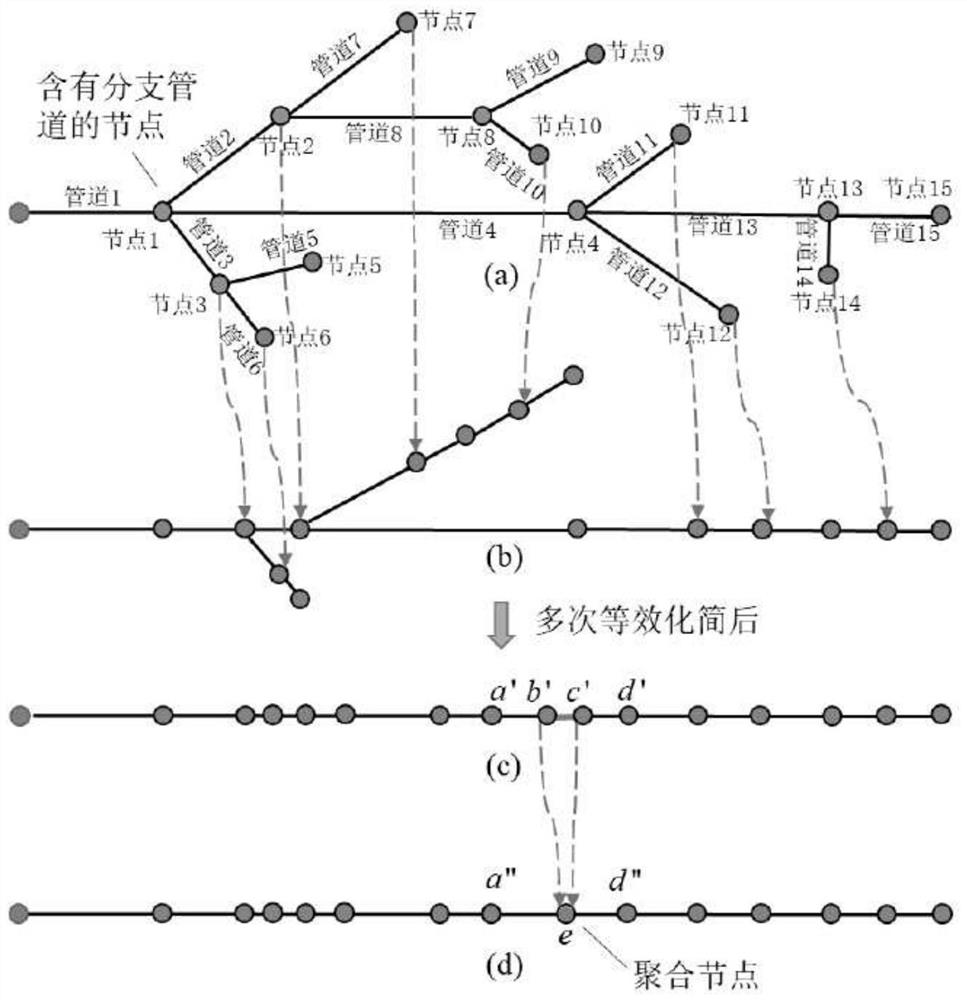Optimization method of heating network model based on topology transformation of heating pipeline network
A technology for heating pipelines and network topology, applied in the field of combined electric-heating dispatch models, can solve problems such as difficulty in applying multi-agent privacy protection, inability to provide physical information parameters, and increased communication burden in the dispatch process, so as to reduce the complexity of the solution and increase the operation. Flexibility, the effect of simplifying scheduling problems
- Summary
- Abstract
- Description
- Claims
- Application Information
AI Technical Summary
Problems solved by technology
Method used
Image
Examples
Embodiment 1
[0217] The district heating system using 30 pipes as shown in Figure 2, and its pipe parameters are shown in Table 1.
[0219]
[0220]
[0222] Model 1: Zone 1 original heat network model with 30 pipes and 17 loads.
[0223] Model 2: Equivalent unbranched model with 30 pipes.
[0224] Models 3-7: Approximate equivalent models when the reduction threshold E is equal to 15, 10, 8, 6, 5.
[0227]
[0228]
[0229] The above simplification results can improve the complexity and privacy of the scheduling process. On this basis, it is also necessary to consider whether the
[0230] Figures 4(a) to 4(f) are the return temperatures of each model at the heat source, and the temperature in the red box in Figure 4(a) is not
[0232]
[0233] Table 3 presents the error comparison of each model, because the errors in Fig. 4(a) to Fig. 4(f) oscillate between positive and negative,
[0236]
Embodiment 2
[0238] Using 1 IEEE-30 Node Power System and 2 30 Node District Heating Systems to Build Electric Heating Integrated Energy
[0240]
[0242]
[0244]
[0245] Table 8 load of each node of heat network
[0246]
[0247]
[0249] Figures 10(a) to 10(b) show the optimal heat output of the units of Model 1 and Model 5. The simplified model of the heat network for the unit
[0251]
PUM
 Login to View More
Login to View More Abstract
Description
Claims
Application Information
 Login to View More
Login to View More - R&D
- Intellectual Property
- Life Sciences
- Materials
- Tech Scout
- Unparalleled Data Quality
- Higher Quality Content
- 60% Fewer Hallucinations
Browse by: Latest US Patents, China's latest patents, Technical Efficacy Thesaurus, Application Domain, Technology Topic, Popular Technical Reports.
© 2025 PatSnap. All rights reserved.Legal|Privacy policy|Modern Slavery Act Transparency Statement|Sitemap|About US| Contact US: help@patsnap.com



